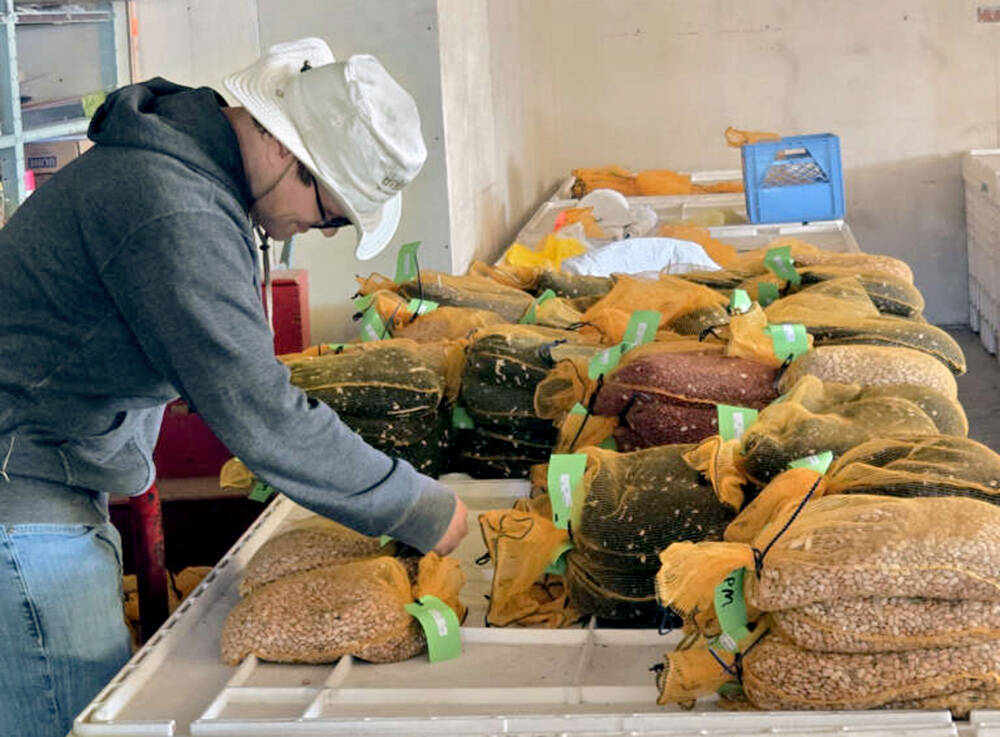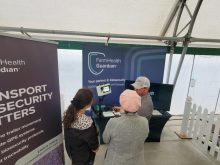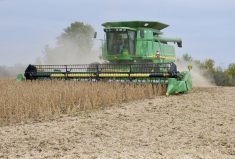A program that linked new graduates, many from non-agriculture programs, with agriculture companies, could provide lessons to the sector in how to recruit new employees.
Why it matters: The agriculture industry has a chronic shortage of workers, with the University of Guelph reporting that each of its graduates usually has four jobs waiting for them. As agriculture becomes more technical, it is a challenge to attract the attention of highly skilled workers.
“It’s really, really hard,” said Joel Sotomayor, president and chief executive officer of agriculture technology companies Farm Health Monitor and Transport Genie.
Read Also

Bean research breeds community giving
University of Guelph dry bean researcher Dr. Mohsen Yoosefzadeh Najafabadi champions sustainability by donating surplus breeding program beans to support food security and community art initiatives.
“Most of the time, the developers don’t have any agriculture experience.”
Not only is it challenging to find people with an interest in working for an agricultural company, but many potential candidates also lack understanding of the sector.
That’s where a quickly executed program delivered by Bioenterprise tried to improve the experience for both agricultural technology companies and recent graduates.
Bioenterprise Corporation is a national, non-profit agri-tech commercialization accelerator, providing customized, hands on services to help entrepreneurs bring their agriculture, agri-food and agri-product technologies to market.
Part of its services for agricultural technology companies is talent identification at all levels. This program created a short-term formal process for that ability to recruit.
The program, which ran from September to March was an initiative through the Growing Forward 2 suite of programs from the federal and provincial governments.
Here’s how it worked:
- Bioenterprise used its network at colleges and universities, including non-agriculture schools, as well as jobs boards, to recruit skilled workers who had graduated in the past three years.
- The organization acted like a human resources department for the agricultural technology companies it works with, screening applicants for them, then sending on the best candidates.
- The new employees worked for Bioenterprise to complete the placement, although many were hired by the companies after the program ended.
- The employees were given a quick education in agriculture through tours of the University of Guelph’s Livestock Research and Innovation Centre’s dairy facility and a greenhouse operation. They were also encouraged and funded to attend sector conferences and matched with Bioenterprise’s sector analysts as mentors.
- A networking event was held for all program participants, the companies where they were placed and educational institutions.
About half of the program participants were graduates of the University of Guelph, but the program also attracted participants from other post-secondary institutions, such as the University of Waterloo, Wilfred Laurier University, Conestoga College and Sheridan College.
Kristen Celotto was one of the participants who graduated from the University of Waterloo where she completed a mathematics degree. Her aunt works for Sotomayor’s companies and he pointed her to the Bioenterprise program. She now works for Transport Genie as a data analyst.
“I was a city person and never had any experience with agriculture. I didn’t realize how big technology is within agriculture and how widespread it is,” she said.
“They were really good about making sure I got the education I needed from the agriculture industry. Mentors had years of experience in agriculture, which was really helpful,” she said.
Sotomayor also hired Younggil Lee through the program for his companies, which provides security solutions for agriculture, as well as a sensor system that monitors livestock welfare during trucking.
Lessons for the agriculture sector
The short program’s success provides some direction to the industry on how to recruit outside of the traditional agriculture schools. There are new skills needed that just aren’t taught there yet.
The challenge is how to get the word out to all those other colleges and universities that there is opportunity in agriculture.
Jessica Bowes, who managed the program at Bioenterprise, said that the sector has to be able to get its message of opportunity into all academic institutions, not just those producing agriculture graduates.
“You can think about career fairs. The tech sector does it well. Students go and walk the floor,” she said.
Building long-term networks with the non-agriculture academic institutions would also help.
Celotto said creating long-term programs like the new graduate employment and mentorship program would be an advantage for the agriculture sector. It’s about creating visibility outside of the usual places where the agriculture sector has gone for years for its employees.
And with each graduate brought into agriculture with no background in farming, a new ambassador is created.
“I enjoy the company and the agriculture industry. What we’re doing is awesome and I believe in it wholeheartedly,” said Celotto.
“There are opportunities for my friends in computer programming and math. Great opportunities.”













